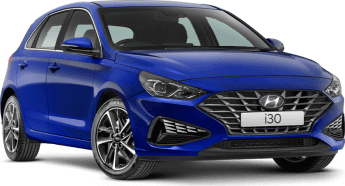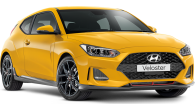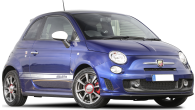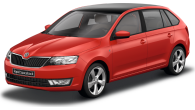Since 2007, the i30 has consistently been Hyundai’s best model.
A car so focused on being an amiable Volkswagen Golf alternative, it’s even been co-developed in Germany. As such, over three distinct generations, there’s never been a dud version.
This was hammered home by the sheer brilliance of 2017’s i30 N, which for many reasons remains a premier league hot-hatch experience to this day.
But does the i30 N-Line have the same impact in the non-full-fat, semi-skimmed warm-hatch category – you know, the sporty hatches that don’t cost the earth?
We drive the latest, 2021 i30 N-Line Premium to find out.
Hyundai I30 2021: N Line Premium
| Engine Type | Turbo 4, 1.6L |
|---|---|
| Fuel Type | Unleaded Petrol |
| Fuel Efficiency | 7.5L/100km (combined) |
| Seating | 5 |
| Price From | $26,510 - $32,670 |
| Safety Rating |
|
Does it represent good value for the price? What features does it come with?
In October, 2020, Hyundai facelifted the PD-series i30 hatch.
Known as the PD4, most of the range gains a wide toothy grille with chrome bars and a sleeker shape to the front bumper as well as fresh lighting elements – but not the N-Line. Why? More on that later. You’ll also find a revised rear bumper and diffuser. The inevitable price rises have also struck, to the tune between $2400 and $3100 depending on grade.
.jpg)
However, there are plenty of new features for all MY21 i30s, including auto-folding side mirrors with heating, a 7.0-inch multifunction display and a restyled steering wheel and gear selector, while on the safety front all models include autonomous emergency braking (AEB) with pedestrian and cyclist detection, lane-keep and steering assist, lane following assist, adaptive cruise control with full stop/go functionality, driver attention warning and auto high beams.
Priced from $36,220, the N-Line Premium as tested here is on the expensive side, but it does usher in two significant changes over the regular i30 – a turbo-engine and dual-clutch transmission powertrain and an upgrade from a torsion beam to a multi-link rear suspension system. Both are transformative additions.
.jpg)
Additionally, you’ll find keyless entry/start, dual zone climate control with rear-seat air vents, heated and vented front seats, a powered driver’s seat, solar control glass, rain-sensing wipers, dusk-sensing LED headlights, front as well as rear parking sensors, sunroof, sunvisor extenders, digitised instrumentation display and wireless smartphone charger.
Meanwhile, a somewhat larger (to 10.25-inch) central touchscreen houses the wireless Apple CarPlay/Android Auto display, Bluetooth phone and audio streaming connectivity, a premium audio system upgrade, digital radio, satellite navigation and rear-view monitor, while a body kit, 18-inch alloy wheels shod with Michelin Pilot 4 performance tyres and a temporary spare round out things nicely. This i30 is heaving with gear.
.jpg)
Should buyers of the $29,490 Ford Focus ST-Line, $35,790 Honda Civic RS, $33,690 Kia Cerato GT Turbo and $35,290 Mazda3 G25 Astina be turning Hyundai’s way? Maybe, as the South Korean-built five-door hatch matches or exceeds most for kit – with the curious exception of blind-spot monitoring and front and/or rear cross-traffic alert (the Mazda’s got both) as well as the Civic’s excellent side lane-watch camera – while offering substantially more power and torque to boot than the lot (related Kia excepted).
One of the few options is metallic paint for $495.
Is there anything interesting about its design?
For some people it’s what hasn’t changed that is the most interesting visual aspect about the 2021 i30 N-Line.
The “Sensuous Sportiness” nosecone found on all other i30s including the base grade does not apply here, for reasons which still aren’t clear, as most models bar the i30 N and Fastback are out of same South Korean factory. Yet even the latter (imported from the Czech Republic) are about to gain the fresh proboscis.
.jpg)
But is this a bad thing? Frankly, no, as the original front-end styling is arguably prettier than the fussy new visage.
Another thing is how well this pleasing 2017 design is ageing, with sober, elegant proportions and confident stance that reflect Hyundai’s desire to be classed as a credible Golf alternative. Plus, the N-Line body kit makes a statement without it being in your face. Listening, Honda Civic?

How practical is the space inside?
Given the basic ingredients are shared with the i30 Active, the N-Line’s interior presentation is an impressive step up.
Not immediately obvious are small changes for MY21, including the 2.25-inch larger central touchscreen with its modernised graphics and repositioned and simplified access button. From the handsome steering and matte grey leather/vinyl upholstery to the red piping and stitching as well as brushed metallic accents, the look and ambience agrees with the N-Line Premium’s price positioning.
.jpg)
The new digital instrumentation, with its BMW-style (or is that Honda-like) hexagonal tacho and central speedo, provides enough differentiation from bread-and-butter i30s for it to feel a bit more special.
.jpg)
As do the panoramic sunroof, thick-rimmed wheel, sports front seats, black trim, double stitching and red seat belts, while the MY21 multimedia update has fresh graphics that is easy and pleasurable to use.
But while there’s no missing the digital speedo, the instrumentation lacks the clarity and elegance of the previous, classically analogue iteration. And it cannot be configured like Audi’s Virtual Cockpit. Where’s the scope for personalisation? It feels like a wasted opportunity.
Otherwise it’s all normal-i30 inside, which means big doors for unimpeded entry/egress, sufficient space, loads of practicality, excellent ventilation and a first-class driving position, offering a welcoming, intuitive interface between car and driver. Vision out isn’t too bad, either, aided by that huge central touchscreen and big exterior mirrors.
.jpg)
The N-Line Premium’s heated and vented front seats are superb, with the driver’s offering a 10-way electrical adjustment including lumbar support. They ensconce their occupants in all the right areas, with bolsters that grip you in tight through tight turns, and immediately make you feel like you’re in a sporty hatch. Their accompanying red seatbelts look great too.
The rear seat area is a bit smaller than in many rival small cars nowadays, but it isn’t a disaster, as the back bench/backrest combo is firm yet supportive, promoting a comfy posture. Rear face-level air vents, a centre armrest, huge door pockets, overhead grab handles, coat hooks, individual reading lights and windows that drop almost all the way are further bonuses. But betraying the i30’s age is the lack of USB ports, with only a 12V outlet in the (huge) centre console between the front occupants.
.jpg)
Finally, the cargo area is big, deep and handy, with a huge space available and a low lip to negotiate heavier objects over. Under the floor is a space-saver spare. Capacity is rated at 395 litres, extending to 1301L with the rear backrests dropped.
Overall, then, with its racy yet classy trim, the i30’s cabin in N-Line Premium guise is as inviting as you’d wish for in a warm hatch.
What are the key stats for the engine and transmission?
While most i30s are stuck with a dull 120kW/203Nm 2.0-litre four-cylinder naturally-aspirated unit, the N-Line steps up to Hyundai’s 1591cc 1.6-litre twin-cam 16-valve four-pot turbo from the Gamma GDI gasoline direct injection family of engines, delivering a healthy 150kW of power at 6000rpm and 265Nm of torque from a low 1500rpm to 4500rpm.
Tipping the scales at 1436kg, it results in a lively 104.5kW/tonne power-to-weight ratio.
.jpg)
It drives the front wheels only via a seven-speed dual-clutch transmission (DCT), with a trio of drive modes – eco, normal and sport with corresponding green, blue and red instrumentation illumination – as well as a manual tip-shift (with forward/up and backward down) and a big pair of paddle shifters behind the wheel.
How much fuel does it consume?
Hyundai says the i30 N-Line Premium’s 1.6 T-GDi engine should average a combined 7.1 litres per 100km – 9.4L/100km around town and 5.9L/100km on the open road – but we managed a still-acceptable 9.2L/100km at the pump. That’s a fine effort considering how hard and fast we extended that four-pot turbo.
For the record, the Euro-5 emissions rated engine officially averages 167 grams per kilometre of carbon dioxide emissions.
Fitted with a 50L tank, some 700km between refills is possible. Standard 91 RON unleaded is recommended or 94 RON E10 mix is tolerable.
Warranty & Safety Rating
What safety equipment is fitted? What safety rating?
Tested in 2017, the i30 scored a five-star rating in the ANCAP crash-test results.
Each model includes seven airbags, AEB as part of Hyundai’s Forward Collision-Avoidance Assist driver-assist suite of features that includes pedestrian and cyclist detection, lane-keep and steering assist, lane following assist, adaptive cruise control with full stop/go functionality, driver attention warning and auto high beams.
Additionally, vehicle stability management (stability control and traction control), anti-lock brakes with Emergency Brake Distribution and Brake Assist, hill-start assist, lane-keep assist, driver-attention warning, auto on/off headlights and tyre pressure monitors.
.jpg)
There are also two rear-seat ISOFIX points as well as three top tethers for straps.
Meanwhile, the AEB system operates between 10km/h and 180km/h (other vehicles), with a complete stop possible at speeds of up to 55km/h (stopped vehicle), 80km/h (moving vehicles) and 65km/h (pedestrians and cyclists).
Oddly, only the i30 Elite features Rear Cross Traffic Alert, Blind-Spot Collision warning and Safe Exit Warning (great for not dooring cyclists).
What does it cost to own? What warranty is offered?
Hyundai offers a five-year/unlimited kilometre warranty as well as 12 months of roadside assistance, with scheduled servicing at every 12-month or 15,000km intervals.
Published online, the prices for the N-Line service is $299 for each of the first five annual services, then rises to $495 (year six), $585 (year seven), $370 (year eight), $310 (years nine to 11), $555 (year 12), $310 (year 13) and $585 (year 14) – and then onwards with similar varying numbers on Hyundai’s website right up to 51 years/510,000km service ($275 in 2021 dollars). Seriously!
What's it like to drive around town?
It should come as no surprise to learn that this i30 is very much a warm – rather than sizzling hot – hatch.
Strong performance, eager steering, a taut chassis, a supple ride and strong brakes makes the N-Line walk the fine line between rorty girl/boy-racer runabout and comfy, refined grand tourer.
Around town, this means smooth and progressive acceleration – rather than all-or-nothing lunges forward – accompanied by light steering for easy manoeuvrability. Aided by a large camera and fairly good vision out, parking in tight spaces isn’t a chore.
Unlike most DCTs, Hyundai’s is tuned for eager off-the-line response and a minimum of hesitation, lacking the lag and jerkiness of most similar systems. What you’re left with is a smooth, speedy and slick shifter that is in keeping with the N-Line’s sporty aspirations.
In Sport mode, the turbo engine holds on to each ratio a little longer, for sustained thrust right up to the 6500rpm red line. A keen driver can have fun exploring the Hyundai’s outer limits safely, without spills… or thrills, for that matter.
That’s because the N-Line falls somewhat short of an i30 N as far as dynamics are concerned… shorter, in fact, that the price gap would have you expect.
While the handling and cornering characteristics are defined by accurateness and agility, with expected high levels of road-holding, mid-turn bumps do transmit through to the steering rack, making it rattle and shake; the front end can lose traction quite easily in damp conditions, and grip carving up through bends isn’t quite as tenacious as the best hot-hatches. What this car cries out for is a limited slip differential.
The ride quality – though a tad firm around town – isn’t uncomfortable by any stretch, with sufficient wheel travel for the Hyundai to be a happy urban commuter. Yet there isn’t quite the controlled and planted grip on offer to make this a satisfying driving machine.
That all said, this isn’t trying to be a Ford Focus ST or Golf GTI rival. To anticipate it as such would be naïve. That’s what the N’s for.
Probably the most glaring issue is noise intrusion, as there’s far too much tyre roar intruding into the cabin. Like most Hyundais, the i30 benefits from an Australian-specific chassis tune.
Verdict
Right now, the N-Line with the DCT is the fastest auto i30 you can buy, and that – plus all the luxuries and features that the Premium includes – makes it an attractive grand touring small car with sufficient speed and athleticism to entertain the keener driver.
But the manual i30 N at only around $5000 more significantly elevates the driving experience and thrills, while an auto is imminent. That’s what we’d save up for.
Still, as a fun and entertaining warm hatch, the i30 N-Line still offers enough consistency to warrant your attention. Easy to respect but hard to get really rapt over.
Pricing Guides


.jpg)

.jpg)
.jpg)
.jpg)
.jpg)



























.jpg)

.jpg)

.jpg)

